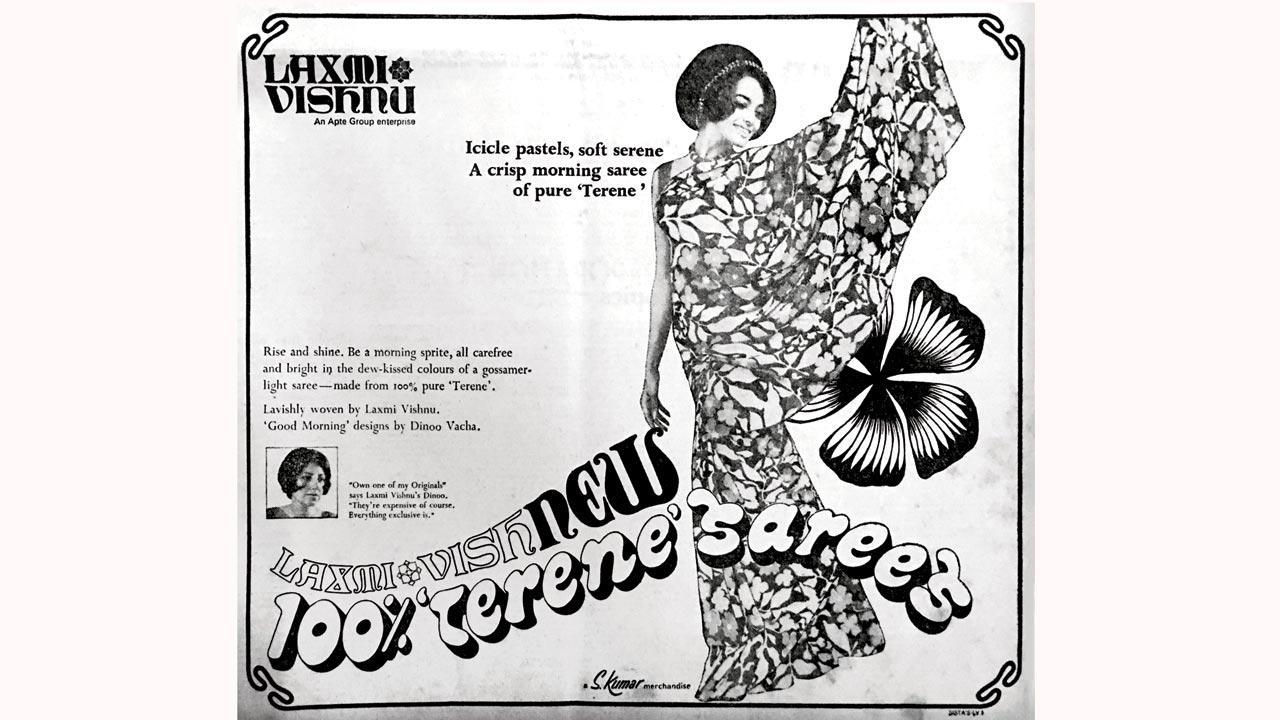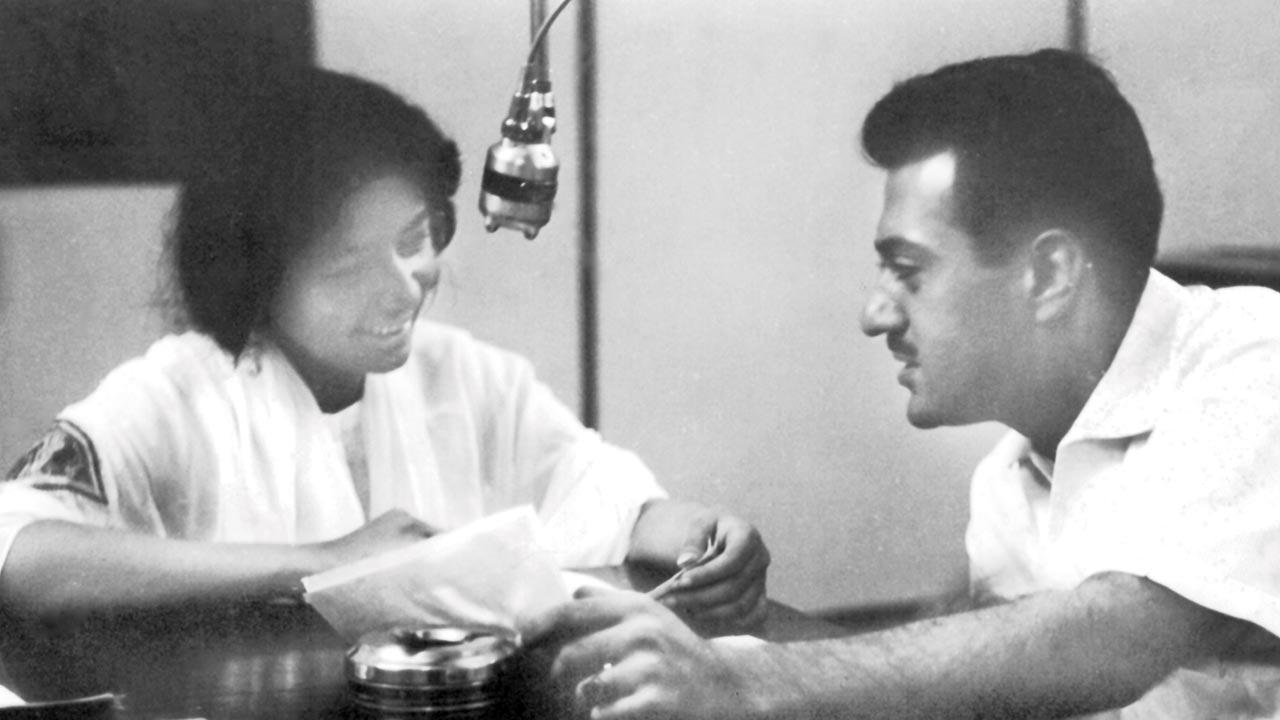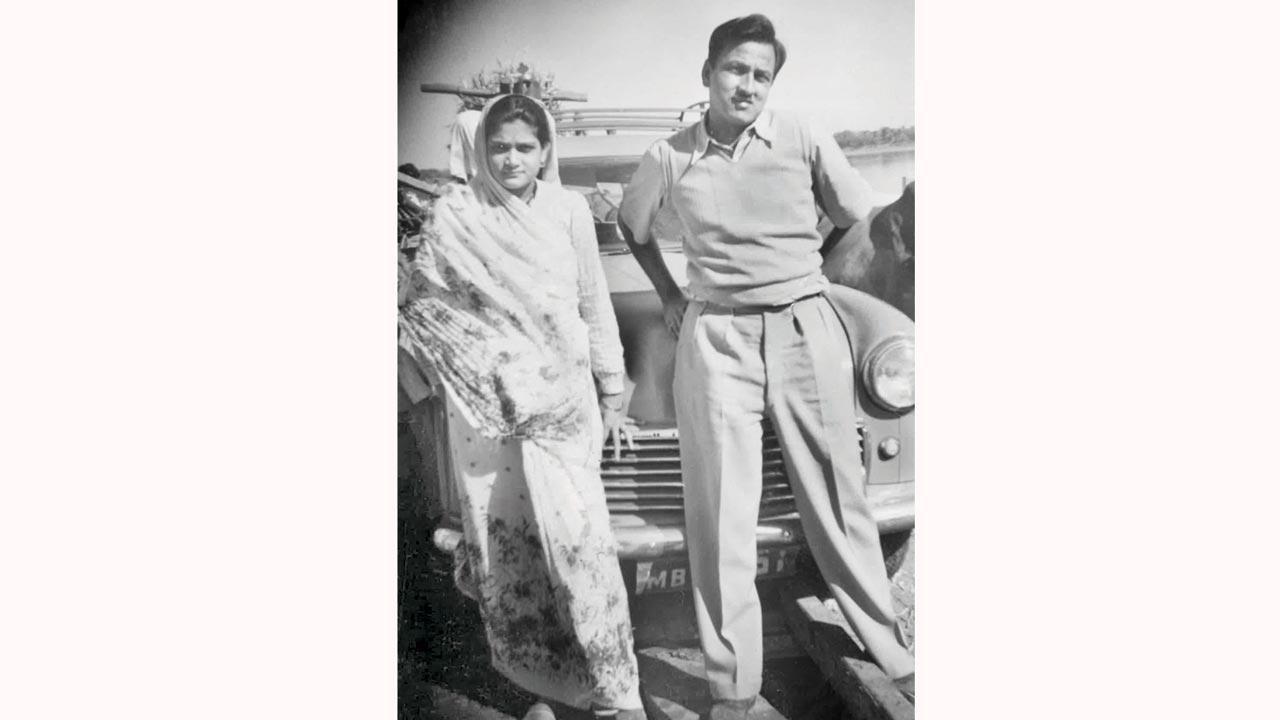Vibrant, synthetic sarees were once upon a time a groundbreaking innovation, and crushingly sophisticated. Our chosen excerpt from the newly released book Thread by Thread, The S Kumars Story by Sathya Saran, captures this sartorial revolution and how it spread

The R&D of Laxmi Vishnu Mills experimented with blending viscose fibre with polyester fibre at the spinning stage. High tech machines would then print the material as required, which would undergo a carbonisation process in which the acid would eat through the viscose, leaving behind polyester fabric. Thus the Terene saree was born. Pic Courtesy: Dhvani Terefabs Exports Pvt Ltd
To Shambhu Kumar goes too the credit for the huge success of the ‘Terene’ sari. Cotton and silk were the materials saris were woven of at that time. Silk was expensive and thus for special occasions. Cotton was best suited for daily wear and the weather conditions for most part of the year, and designs and weaves differed from state to state and region to region, offering a huge variety to choose from. Yet, cotton crumpled with wear, and with more women entering the workplace, ironing the wrinkles out became a necessary chore.
ADVERTISEMENT
Besides, cotton took a long while to dry in the monsoon. A sari made of synthetic material might eliminate these shortcomings and find favour.
Nylon, a filament which was in vogue at that time, in the mid ‘60s, had a significant drawback in the fact that the material, like its co-product, plastic, could not let air pass through, and so did not allow the skin to breathe. In a humid and hot climate like India, nylon was almost unwearable as a garment.
 Choreography Shanti Chopra roped in the best models, from Anna Bredemeyer and Shobha Rajadhyaksha (now De), to Sangeeta Bijlani for the ‘tamasha shows’. Pic/Sangeeta Chopra
Choreography Shanti Chopra roped in the best models, from Anna Bredemeyer and Shobha Rajadhyaksha (now De), to Sangeeta Bijlani for the ‘tamasha shows’. Pic/Sangeeta Chopra
Shambhu Kumar, who had studied all aspects of cloth production by then, having spent every free minute in various departments of Kohinoor Mills, watching, asking questions and learning, came up with a suggestion. Soon, the R&D of Laxmi Vishnu Mills would be experimenting with blending viscose fibre with the polyester fibre at the spinning stage. The high tech machines would then print the material as required. Once printed, the material would go through a carbonisation process, and the acid would eat through the viscose, leaving behind polyester fabric. Soft and pliable, and more important, easy on the skin.
The new machines of the mill that Apte had inherited printed brightly coloured designs and patterns on the fabric. This in turn, led to a new idea from Ramesh Singhal of CAFI: to print saris of terylene, branded as ‘Terene.’
A design department was already in place, to create the enticing prints for the material. Apte now recruited Dinoo Dossabhoy to create printed fantasies on six-yard lengths that themills would send out as saris. Both Shambhu Kumar and Apte were sure that the easy-to-maintain, attractive saris would find instant appeal. The saris were indeed soft and silky. The claim was they could go through a finger ring, perhaps ‘inspired’ by the story of Dacca muslin that was woven for Akbar’s daughter, yards of which could indeed go through a ring.
 Ameen Sayani with actor Nanda. Chitrahaar, sponsored by S Kumar, beamed every Wednesday at 3 pm, and was targeted at homemakers. It’s popularity pushed it to the prime 7 pm slot. Pic/Rajil Sayani
Ameen Sayani with actor Nanda. Chitrahaar, sponsored by S Kumar, beamed every Wednesday at 3 pm, and was targeted at homemakers. It’s popularity pushed it to the prime 7 pm slot. Pic/Rajil Sayani
Excise duty made a huge impact on pricing, but Shambhu Kumar kept the mass market in mind. And decided to keep the price low. To achieve maximum sales. Hence, the price point was 99 rupees.
To further push their new product in the market, Dossabhoy suggested they hold fashion shows. Little did she know that this one idea of hers would go on to
create raves.
They were right. The saris spun by Laxmi Vishnu Mills were quickly picked up by women captivated by the fabric and prints. The saris, though woven by Apte’s Mill, came to be known in the market as ‘S.Kumar ki Sariyan,’ as S.Kumars was the sole selling agent for the saris. Khatau and Garden Silk Mills would also step into the synthetic sari space shortly after, but once again, Shambhu Kumar had ensured his mentor had first mover advantage.
 Shambu Kumar and Rajkumari on their road trip honeymoon in 1955. Pic/Rajkumari Kasliwal
Shambu Kumar and Rajkumari on their road trip honeymoon in 1955. Pic/Rajkumari Kasliwal
As Ashok Shah, Vice President, Marketing, Western Region, says, ‘We had dealers for the saris across India. Laxmi Vishnu Mills were producing 10 lakh metres of saris every month, carrying the S.Kumars brand name.’
‘Terene’ saris raged as a must-have for a long period. When the fashion winds changed direction. And the fire of ‘Terene’ saris burnt low, the production was stopped.
• • •
Shambhu Kumar gave his namesake a simple brief: he wanted to popularise synthetics, as a more viable substitute for the more expensive cotton fabric, and extend their distribution across India, including in the small towns and villages.
‘That’s how the fashion shows started,’ Sista says, ‘as a means to getting the maximum number of retailers into the fold.’ It was a novel idea, and it would take off like a wild fire.
Rupa Sangle, who worked at Sista’s, says Abhay Kumar shared the honours for the marketing ideas that pushed S.Kumars into becoming a national brand. ‘They believed in backward integration,’ she says, of the brothers’ way of working. Abhay Kumar, she adds, believed that it was the man behind the counter who was more important than the man who reads your ad. Thus, ‘the dealer was the vital link; if the man behind the counter believed in the goods, he would do his best to sell it. And so, the focus was on the dealers. And trade-meets would be held all over India.’
The masterstroke of S.Kumars was they created a Retailer Gift Unit scheme, according to the value of the goods. And incentives were built into the scheme, both at the buying and the selling stage … so retailers would be motivated to pick more goods from dealers, as well as sell more. They would go on to collect a huge database of over 35,000 retailers from all across the country through this scheme.
When the fashion shows were launched as a way to familiarise dealers about the products on offer, audio-visual ads were part of the package. Sangle, proficient in Hindi, created the first ever Hindi jingle for S.Kumars. ‘Jingles in Hindi became very popular later,’ she explains, ‘but as I was a Hindi copywriter, I instinctively came up with a jingle in Hindi, and it clicked.’
Partly because Abhay Kumar preferred Hindi, and the dealers also found it easier to understand the message. ‘They were not just glamour events,’ Sangle says. ‘They were trade shows. And everything was done in Hindi.’
The product was male oriented, as the thrust was on suitings, and the focus was on suit lengths. Male models would walk the ramp, and a commentary in Hindi would give details of the special qualities of the fabric. Sangle remembers how the models, mostly English medium educated, would react saying they could not relate to the Hindi commentary. ‘I would tell them there was no need to react, they just had to walk the ramp.’
‘The fashion shows built the S.Kumars brand, but built my mother’s career too,’ says Sangeeta Chopra, who owns an art gallery, Art Musings in Colaba, in South Mumbai. And indeed, when Sangeeta’s mother, Shanti Chopra, who had been working with Femina magazine to orchestrate their fashion shows, left to launch her own company, it was S.Kumars who gave her the first big break. ‘We were handed the project of holding 40 shows in 30 days, all over India; it was a huge breakthrough,’ Chopra remembers.
Bobby Sista recollects how the first few fashion shows were held primarily in Bombay, with Shanti Chopra bringing in lovely, sophisticated models. The potential of the shows, he says, caught the attention of Shambhu Kumar, who immediately saw them as a means to take his mission forward. He decided to extend the shows to towns across India, big or small.
Thinking very differently from what a lesser marketing man would have done, Shambhu Kumar decided to place his shows in the most opulent ballrooms of five-star hotels.
‘Retailers and dealers will hold us in awe,’ he told Sista, ‘we will earn their respect.’
It was completely a B-to-B initiative, aimed at the dealer, fuelling his understanding of the goods, and adding to his need to invest in buying and selling it. Instead of costly advertising through mass media, the company worked by marketing their message to dealers in every town across the country. The idea bore rich fruit as dealers, ‘thronged to the events.’
According to Sangle, the fashion shows were thought through for maximum information and impact. Audio-visuals that centred around festivals but highlighting the USPs of the fabrics would be created and beamed to the dealers on the ramp, followed by models wearing garments made of the fabrics. The range of suitings would also be on display, so dealers could actually touch and feel the fabric and understand it for themselves. ‘Bhaiya Saheb and Dada Saheb believed in the economy of scale, that selling cheaper would result in higher profit, both to the dealer and to S.Kumars. Naturally, bookings were immediate.’
If the fashion shows were a thundering success with the audience they were aimed at, it was also because Shanti Chopra and her team worked to set a benchmark. Though she was still in her teens, Sangeeta, Shanti’s daughter, was a keen team member. ‘We would go to the factory and pick up the fabrics; design the clothes, get them stitched. We would discuss concepts with the Kasliwal brothers and plan the schedules.’
Though they often travelled with the shows, accompanied by top models, both male and female, the Chopras also found ways to make the shows run on remote control. ‘Shanti Chopra had designed and given us a portable stage, complete with props. She would send detailed instructions for setting up the show, and we would manage it in the smaller towns,’ Sista remembers. ‘But she roped in the best models, from Anna Bredemeyer and Shobha Rajadhyaksha (now De), to Lascelles and Dalip Tahil.’ The ratio was four male models and eight female models. ‘Kalpana Iyer, Juhi Chawla, Kiran Vairale, Kimi Katkar … you name the model and she has been part of an S.Kumars show,’ Chopra adds.
‘They were what we called the “Tamasha shows,”’ Sangeeta remembers. ‘We projected product ranges and collections for different occasions. Uniforms for defence outfits were always a big hit. Segments of the shows were pure fun; entertainment as soft selling. We would use popular Hindi songs and dances, and break the monotony of the ramp walks. The show would start with casuals, and move to evening wear. We had seven sections; and they included glamorising suitings and dressing the younger set. In one show, all the Kasliwal grandchildren were pressed into service to model school uniforms.’
Excerpted with permission Thread by Thread: The S Kumars Story by Sathya Saran, India Penguin Enterprise
 Subscribe today by clicking the link and stay updated with the latest news!" Click here!
Subscribe today by clicking the link and stay updated with the latest news!" Click here!







